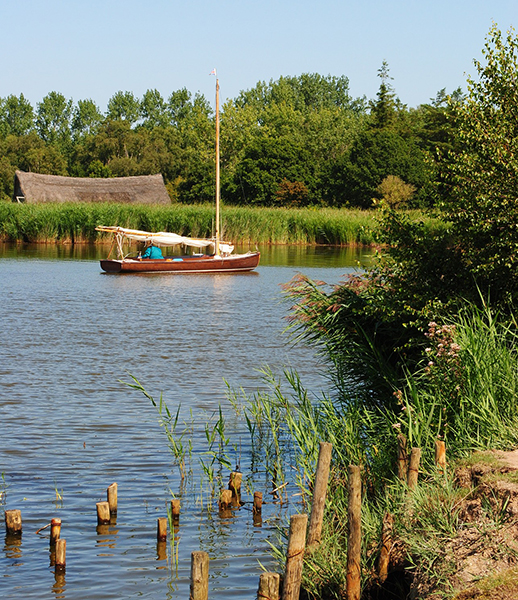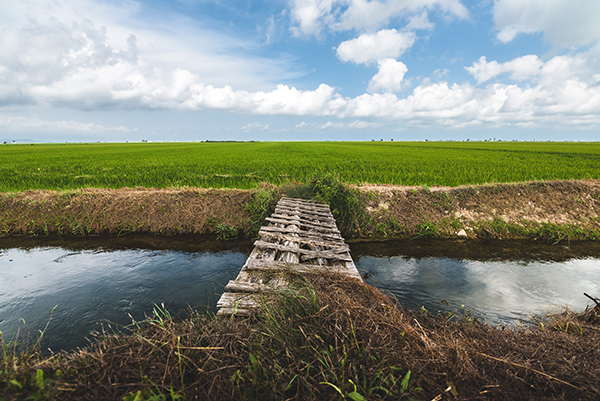GREAT BRITAIN, EUROPE
Norfolk & Suffolk Broads
The Broads is a landscapes made of rivers, lakes, marshes and bogs about 200 km north-east of London. The broads cover an area of 303 km², with a total of seven navigable rivers and 63 shallow lakes, most of which are less than 4 m deep. While the Norfolk Broads, with its five rivers, covers an area of 160 km², its 40 large, shallow lakes provide a total of 200 km of navigable waterways. The entire mosaic of wetland habitats includes open water, reedbeds, carr woodland, grazing marsh, and fen meadow, with an extensive complex of flooded medieval peat diggings.
What makes it special
For decades, the broads were known as a purely natural landscape. Only in 1960s, scientists discovered that the area is man-made and results from excavations of peat in the Middle-Ages.
Protection status
· Site of Special Scientific Interest (SSSI) in England
· Ramsar Site 68, Wetland of international importance
· EU Natura 2000
· National Park

Biodiversity
The Broads stand as the largest protected wetland in Britain, offering a sanctuary for diverse wildlife, with a focus on avian species and plants. The waterfowl population encompasses Mallard, Coot, Great Crested Grebe, Greylag Goose, Canada Goose, and Egyptian Goose. Among the larger birds thriving in this habitat are the grey heron, cormorant, kestrel, sparrowhawk, and bittern. Notably, the Broads host the rare Cetti’s Warbler for breeding, and it is home to the sole breeding colony of the Common Crane in Britain. The wetland also shelters rare insects, including the Norfolk Hawker dragonfly and the Old World Swallowtail butterfly.

Threats
Potential impacts of climate change on the Broads include more frequent and severe flooding, coastal flooding and drought. These changes may affect water resources, livestock grazing and water quality. Saltwater intrusion into freshwater systems, loss of freshwater-dependent flora and fauna, and changes in recreational and agricultural patterns are also of concern. The deterioration of infrastructure, erosion of the landscape and cultural heritage as well as changes in the economy and traditional industries are to be expected.

Our Work
The Broads Authority has the important role of looking after the Broads and the interests of the people who live, work and visit here. We have two purposes, identical to those of the other members of the National Park family, which are to conserve and promote people’s understanding and enjoyment of the special qualities of the area. We also have a third purpose to look after the waterways and protect the interests of navigation. We are the local planning authority and the harbour and navigation authority.
The broads form also part of the UK and Ireland Lakes Network: www.ukandirelandlakes.org


